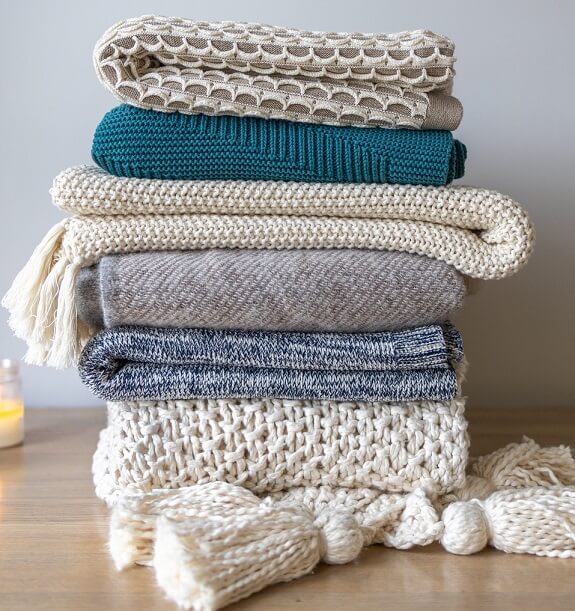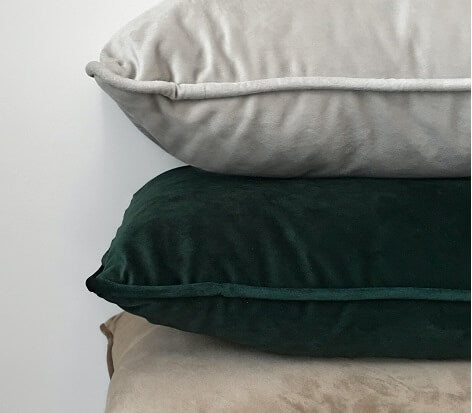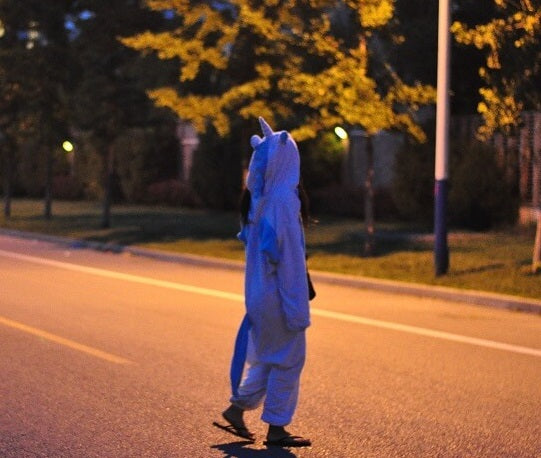Ensuring a good night’s sleep for your baby isn’t just about following a bedtime routine or setting the right room temperature. It goes beyond that, right down to what they wear to bed. Many parents might wonder why proper sleepwear can help your baby sleep better. The answer lies in the comfort, safety, and sense of security that the right sleepwear can provide, impacting their quality of sleep significantly. In this blog post, we will explore the importance of choosing the right sleepwear for your baby and how it can contribute to their sweet dreams and, consequently, better development and growth.

Understanding the Role of Comfort in Baby Sleep
In the realm of infant slumber, the concept of comfort cannot be overstated. The selection of sleepwear that embodies softness and breathability is paramount. Imagine the delicate skin of a baby, sensitive and unaccustomed to the harshness of the external world; it requires a gentle touch, akin to the embrace of a cloud. Fabrics such as cotton stand out for their gentle caress, ensuring that your baby's skin can breathe and remain free from irritation throughout the night. This meticulous choice of material is not merely about tactile pleasure but about ensuring moisture is efficiently wicked away, keeping your little one dry and content in their dreamy ventures.
Moreover, the aspect of freedom in movement is crucial. Babies, much like the rest of us, shift and turn in their sleep. Their sleepwear should facilitate, not hinder, this natural mobility. Envision sleepwear that acts as a second skin, moving seamlessly with every little stretch and wiggle. This freedom is not just about comfort; it's about allowing babies to explore the natural movements that are integral to their development, even in sleep.
This consideration of comfort extends to every detail, including the avoidance of potential irritants such as tags or rough seams that could disrupt a baby's peaceful rest. Every element of baby sleepwear must be scrutinized with comfort in mind, ensuring that sleep is not just a necessity but a sanctuary of solace and ease for your baby.
The Significance of Temperature Regulation
Maintaining an optimal body temperature for your baby during sleep is a critical element for their overall safety and comfort. The challenge of achieving this balance cannot be underestimated, as both overheating and being too cold can have adverse effects on a baby's sleep quality. Overheating, for instance, has been directly associated with an increased risk of sleep disturbances that can interrupt a peaceful night's rest. More critically, it has been linked to a heightened risk of Sudden Infant Death Syndrome (SIDS), a concern that underscores the importance of careful temperature management.
On the flip side, a baby that is too cold may struggle to achieve deep, restorative sleep, potentially resulting in frequent wakefulness and a general sense of discomfort. This scenario highlights the necessity of selecting sleepwear that is not only comfortable but also suitable for the prevailing weather conditions, ensuring a cozy sleep environment that encourages uninterrupted sleep.
The choice of fabric plays a pivotal role in this context, with breathable materials such as cotton and bamboo blends being ideal for facilitating proper air circulation. These materials help in wicking away excess moisture, thereby preventing your baby from becoming too hot. Conversely, during colder months, layering with appropriate materials can provide the necessary warmth without risking overheating.
In essence, temperature regulation through the right choice of sleepwear is a foundational aspect of ensuring your baby's safety and comfort throughout the night. By prioritizing breathable fabrics and adjusting layers according to the season, parents can create an ideal sleep environment that fosters safe and sound slumber for their little ones.
Sleepwear and the Safe Sleep Environment
Creating a safe sleeping environment for your baby extends beyond the crib and room temperature, directly into the realm of what they wear to bed. It's essential to consider how sleepwear might impact your baby's safety throughout the night. For example, loose clothing or bulky blankets in the crib could elevate the risk of suffocation, while also making overheating more likely. A safer alternative is the use of sleep sacks or wearable blankets, which are designed to keep your baby warm without the hazards associated with traditional loose bedding. These options snugly fit around your baby, minimizing the risk of fabric covering their face and ensuring better temperature control.
The selection of flame-resistant or snug-fitting sleepwear is another critical consideration, meeting safety standards and providing an extra layer of protection. Such precautions are not merely regulatory—they're practical steps towards minimizing risks in your baby’s immediate sleep environment.
It's also important to note the material and design of sleepwear in relation to safety. Opting for items without small buttons, loose ribbons, or sharp zippers can help prevent accidents, ensuring nothing poses a risk to your baby during their sleep. In focusing on these aspects, parents can confidently provide a secure and snug setting that supports uninterrupted and safe sleep, highlighting the intricate connection between a well-thought-out choice in sleepwear and the overarching goal of maintaining a secure sleep environment for the youngest members of the family.
The Psychological Comfort of Routine and Familiarity
Integrating specific types of sleepwear into the nightly ritual plays a crucial role in signaling to your infant that it’s time for rest. This consistent cue not only helps in demarcating day from night but also instills a sense of predictability and security, essential components for your baby's psychological well-being. As creatures of habit, babies thrive on routine, and the act of changing into sleepwear can become a comforting signal that the day has ended, making the transition to sleep more natural and less resistant.
Familiarity with their sleepwear, from its texture to its scent, adds another layer of comfort, reminding them of the coziness and safety of bedtime. This familiarity can be especially soothing, providing a stable point of reference in their world. Just as adults may associate certain clothing with relaxation or specific activities, babies, too, can develop these associations with their sleepwear, reinforcing a positive sleep association.
Moreover, engaging in this bedtime ritual consistently aids in cultivating a secure attachment environment. This secure base is not only crucial for emotional and psychological development but also for fostering independence and confidence in their surroundings. By embedding sleepwear into this routine, parents can subtly reinforce these feelings of security and comfort, paving the way for a restful night. This practice, while seemingly simple, is a profound tool in nurturing your baby’s mental and emotional health, underscoring the importance of routine and familiarity in their overall sleep experience.

How the Right Sleepwear Can Aid in Longer Sleep Durations
When each element - comfort, temperature control, and safety, is carefully considered in choosing sleepwear for your baby, the path to prolonged, uninterrupted sleep becomes clearer. This isn’t just about the immediate benefit of rest; it’s a building block for your baby’s health and development. Proper sleepwear supports a rest environment that mimics the womb's security and warmth, fostering a natural, deep sleep cycle. With fewer awakenings due to discomfort or temperature fluctuations, your baby can cycle through the essential stages of sleep, crucial for brain development and physical growth.
Furthermore, when your baby sleeps well and safely, it naturally eases parental anxiety, contributing to a more relaxed household environment. This tranquility allows parents to catch up on their much-needed rest, knowing their baby is snug and secure in their crib. It’s a reciprocal relationship; as your baby’s sleep quality improves, so too does yours, reinforcing the cycle of positive sleep patterns for the entire family.
By centering your baby's nighttime attire around these core principles, you’re not just dressing them for the night. You’re enveloping them in an embrace that whispers, "sleep well, grow strong," ensuring their nights are as enriching as their days. This attentive selection of sleepwear is a simple yet profound step towards enriching your baby’s sleep quality and, by extension, their overall well-being.
Choosing the Right Sleepwear for Your Baby
Selecting the perfect sleep attire for your baby is a thoughtful process that extends beyond mere aesthetics. Begin with the selection of materials; soft, breathable options such as cotton or bamboo are ideal for ensuring your baby's skin can breathe easily, reducing the risk of overheating and irritation. The fit is equally crucial; it should be snug to minimize risks of entanglement yet offer enough room for your baby to move freely, supporting their natural mobility and development. The seasonality of the sleepwear should not be overlooked. Depending on the room's temperature, the thickness and layers of the sleepwear will need adjustment. Lightweight fabrics are preferable for warmer months to prevent overheating, while slightly heavier, layered options can provide the necessary warmth during colder times without overheating risks. Additionally, it's important to stay informed about the latest safety standards and recalls related to baby sleepwear to ensure your choices are not only comfortable but also secure. This comprehensive approach to choosing your baby’s sleepwear not only contributes to their uninterrupted sleep but also supports their overall safety and well-being, making bedtime a smoother, more enjoyable experience for everyone involved.






